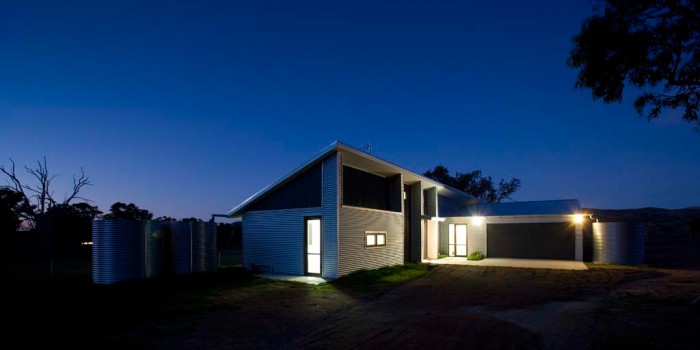
One of the more interesting projects on CCJ Architects is their concept of a rural home. In this particular case it can be seen that the homes attempt to incorporate “natural energy” into the way in which they are designed and function (Keitsch 2012, pp. 141-145). For example, as explained by their website the rural homes apparently utilize various forms of passive solar and ventilation principles in order to minimize energy use within the building. This means that large windows and areas where the wind can pass through have been incorporated into the home design so that light bulbs and various method of artificial climate control (i.e. air conditioners) do not have to be utilized during particular periods of the day. Not only that, due to the location of their rural home projects which is situated at the Namadgi and Bendora dams, homes in the area do not have to rely on an external power supply. Instead, the mini hydro system within each house effectively allows them to have free unlimited energy. Another factor that should be taken into consideration is the fact that each home has its own onsite sewer treatment facility and enough storage for 50,000 litres of rainwater. In effect, each home is self sustainable and does not need to utilize any external means of support to keep its inhabitants safe and comfortable. As the demand for water grows so too will necessity of increasingly larger means of water extraction and delivery be needed. The inherent problem with this is that the price of finite resources continues to increase over time as demand grows. There will eventually come a time where the world will have to deal with the dwindling supply of water and the after effects it will cause on the environment. There are already squabbles breaking out between India, China and Egypt regarding sharing the water resources that feed into their respective territories with no end in sight in finding an effective solution. It is based on this that the researcher for this article advocates better methods of water conservation as well as a certain degree of self-imposed limitations on population growth so as to ensure that water resources are not completely depleted within the coming years.
Overall, this particular example of a type of sustainable home shows how living arrangements can be created that enable people to live in such a way that they can minimize their impact on the local environment while at the same time continue to live in comfort with a variety of modern conveniences (Keitsch 2012, pp. 141-145).
Reference
Keitsch, M 2012, ‘Sustainable Architecture, Design and Housing’, Sustainable Development, vol.20, no.3, pp. 141-145, GreenFILE, EBSCOhost.